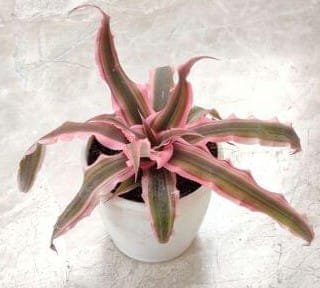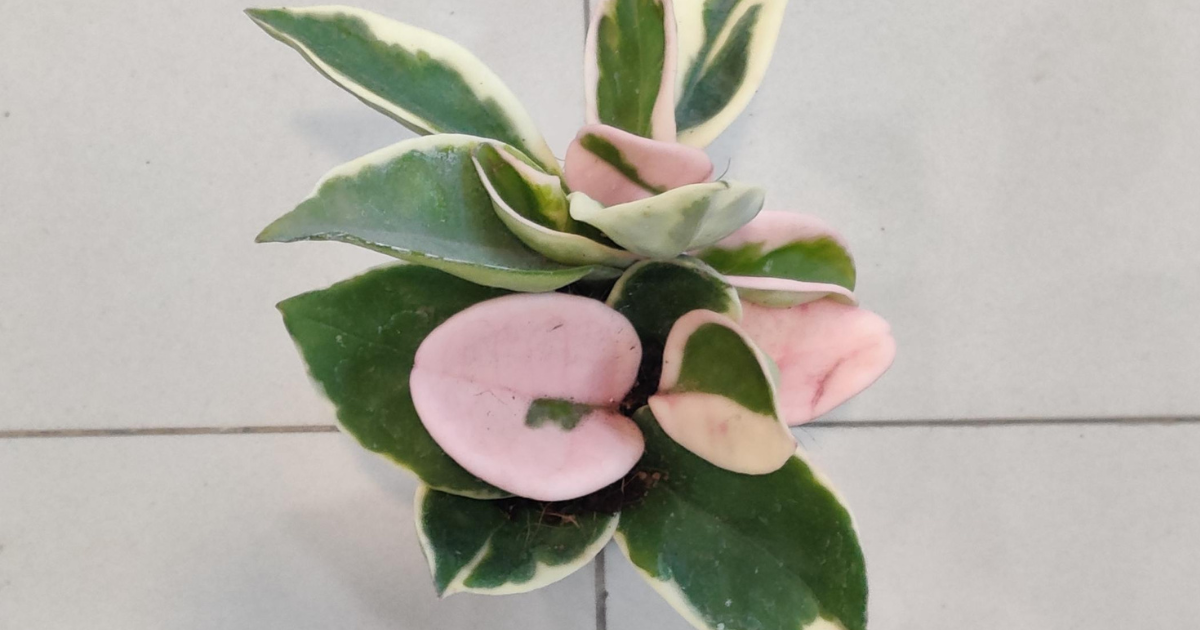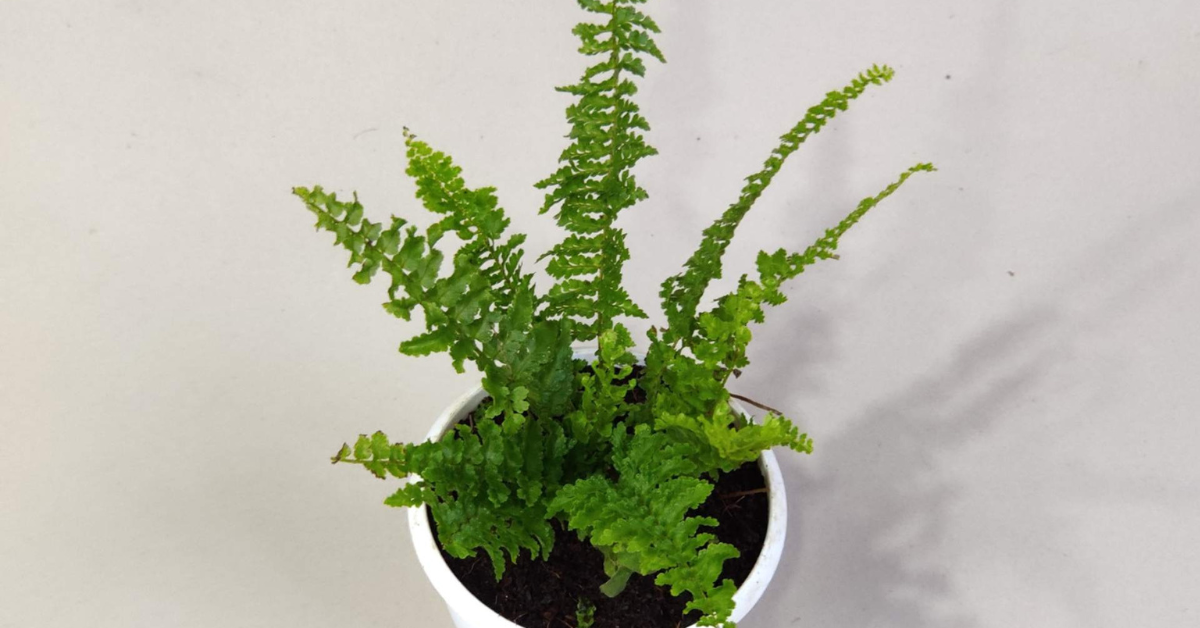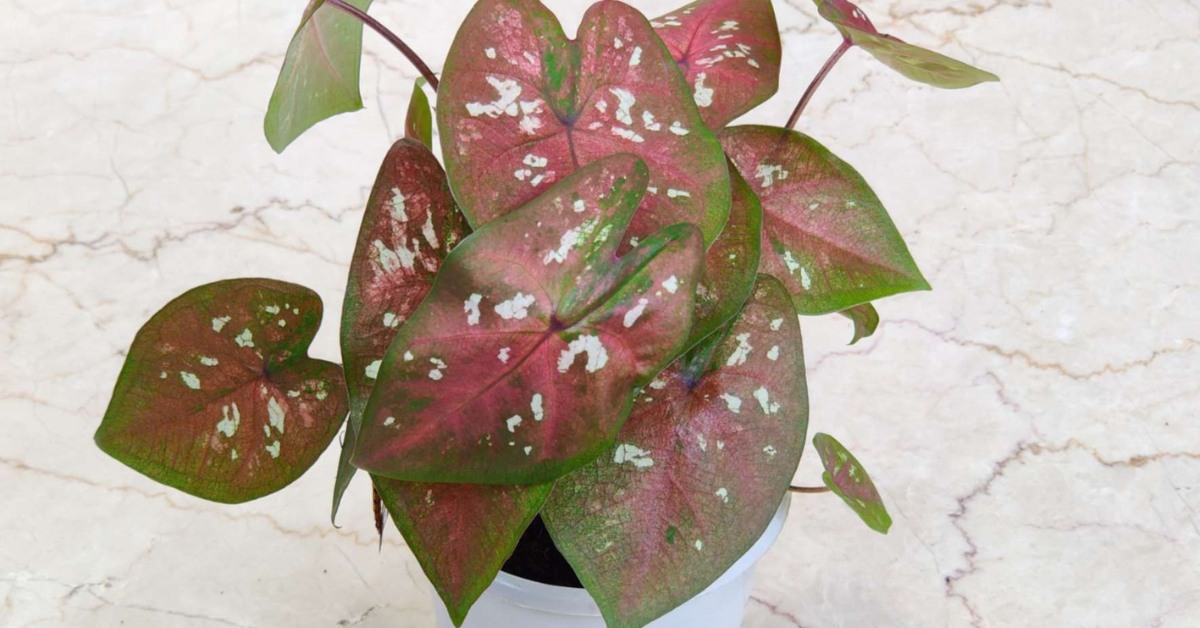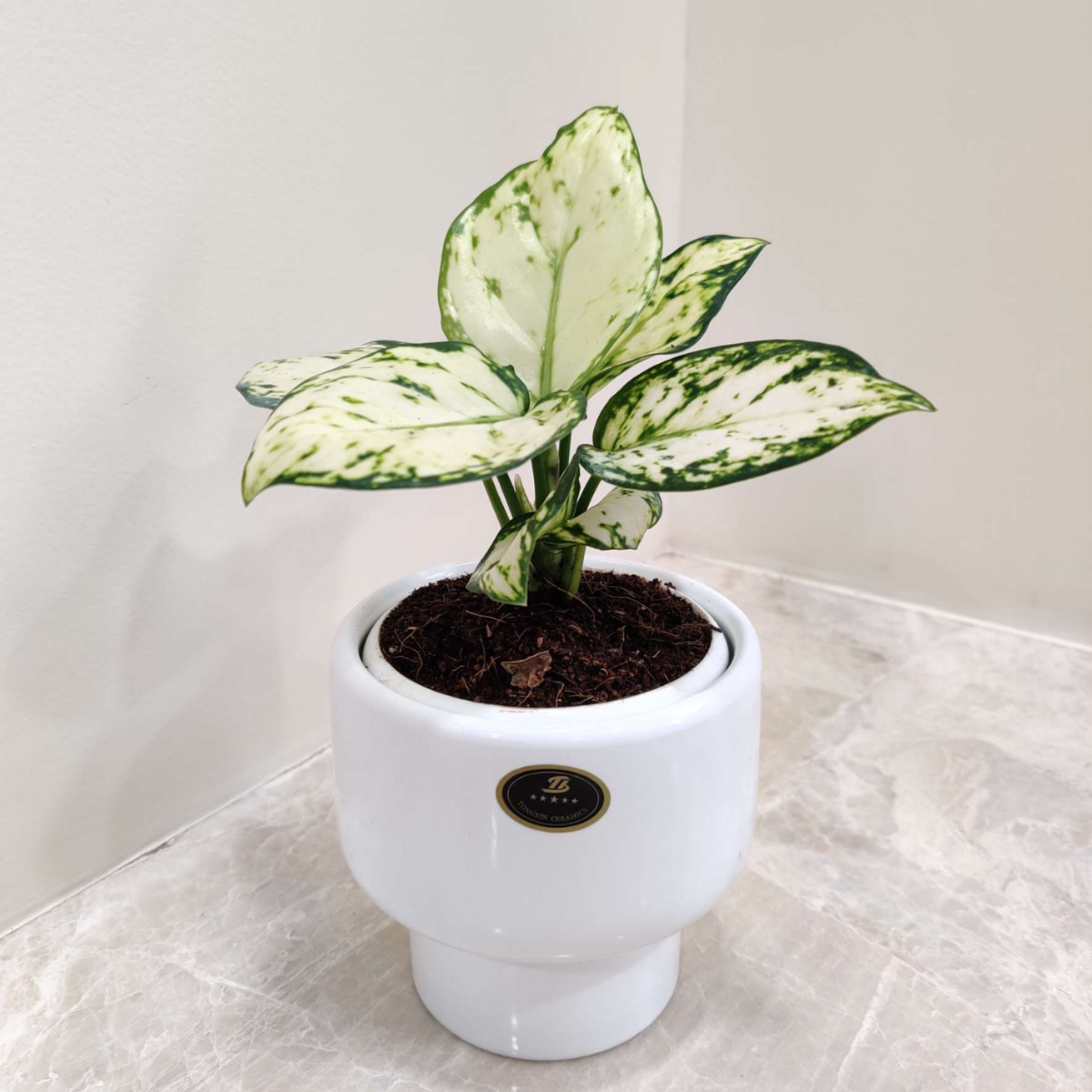If you’re searching for a low-maintenance houseplant that delivers maximum visual impact, look no further than the Cryptanthus bromeliad, commonly known as the Earth Star. These striking tropical plants, native to Brazil, bring a burst of color and texture to your indoor space with their star-shaped rosettes and vibrant foliage. With over 1,200 species and cultivars available, Cryptanthus bromeliads offer something for every plant lover — from beginners to seasoned indoor gardeners.
In this comprehensive guide, we’ll explore everything you need to know about Earth Star bromeliads, including their origins, unique features, ideal care practices, propagation methods, common problems, and their role as air-purifying, pet-friendly houseplants.
What is a Cryptanthus Bromeliad (Earth Star)?
The Cryptanthus genus, part of the larger bromeliad family (Bromeliaceae), includes a diverse range of terrestrial bromeliads native to the rainforest floors of Brazil. Unlike many bromeliads that grow as epiphytes (on trees), Cryptanthus bromeliads are true soil dwellers, making them ideal for container gardens and indoor plant collections.
Their common name, “Earth Star,” comes from the rosette arrangement of their leaves, which radiates outwards like a star resting on the forest floor. Beyond their captivating shape, Earth Stars are prized for their wide variety of foliage colors and patterns — from
Hidden Blooms with Lasting Beauty
deep greens and rich reds to bright pinks, purples, silvers, and multi-colored combinations.
The name “Cryptanthus” translates to “hidden flower,” referencing the plant’s small, often overlooked blooms that emerge deep within its center. These flowers, typically white or pink, are modest compared to the plant’s dazzling foliage and usually appear once the plant reaches maturity.
Common Name: Cryptanthus bromeliad, cryptanthus, earth star
Botanical Name: Cryptanthus spp.
Family: Bromeliaceae
Plant Type: Terrestrial bromeliad
Mature Size: 3 in. to 3 ft. (varies by species)
Sun Exposure: Bright indirect light; resents direct sunlight
Soil Type: Bromeliad potting mix
Soil pH: 4.0–6.0 (acidic)
Bloom Time: Blooms once only
Flower Color: White or pink (but generally grown for foliage)
Native Area: Brazil
Why Choose Cryptanthus for Your Indoor Garden?
- Dramatic, Star-Shaped Foliage
- Incredible Variety of Colors and Patterns
- Compact Size — Perfect for Small Spaces
- Air-Purifying Qualities
- Generally Non-Toxic to Pets
- Prolific Pups for Easy Propagation
Earth Stars not only elevate your indoor aesthetic but are also considered relatively easy to care for — making them an excellent choice for beginners or anyone looking to expand their collection of indoor tropical plants.
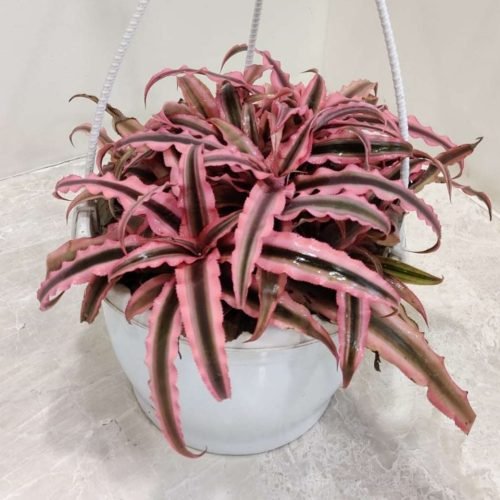
Types and Popular Varieties of Cryptanthus
With over 1,200 known species and cultivars, there’s a Cryptanthus to suit every style. Here are some popular Earth Star varieties to look out for:
Cryptanthus bivittatus ‘Pink Starlight’
One of the most common and beginner-friendly varieties, ‘Pink Starlight’ features vivid pink stripes contrasted by deep green foliage.
Cryptanthus bivittatus ‘Ruby Red’
Known for its intense ruby-red foliage, this variety adds a bold splash of color to any space.
Cryptanthus ‘Black Mystic’
Dramatic dark leaves with silvery stripes create an exotic, moody aesthetic — perfect for modern interiors.
Cryptanthus ‘Osiris’ (Rainbow Star)
True to its name, this variety boasts multicolored leaves blending pink, red, green, and silver hues.
Cryptanthus zonatus ‘Zebrinus’
Distinctive brown-green leaves with silver banding resemble zebra stripes — ideal for adding unique texture to your plant collection.
How Big Do Earth Star Plants Get?
Cryptanthus bromeliads are compact, making them ideal for desktops, windowsills, terrariums, or grouped plant displays. Most varieties reach:
- Height: 3 to 12 inches (7.5 to 30 cm)
- Width: Up to 12 inches (30 cm)
Their manageable size and shallow root systems make them perfect for small pots, decorative containers, and limited spaces.
Cryptanthus Care: How to Grow Earth Star Bromeliads Indoors
Providing the right growing environment ensures your Earth Star thrives and maintains its signature vibrant colors. Here’s your complete Cryptanthus care guide:
Light Requirements
Earth Stars naturally grow under the rainforest canopy, where they receive filtered, indirect light. To mimic these conditions indoors:
- Place your Cryptanthus in bright, indirect sunlight.
- Dappled light or light shade is ideal.
- Too little light results in dull, faded foliage.
- Too much direct sunlight can bleach or scorch leaves, making them appear leathery.
Tip: If your Earth Star’s colors look dull, gradually move it to a brighter spot with indirect light to enhance its vibrancy.
Watering Your Earth Star
Proper watering is crucial for Cryptanthus health:
- Keep soil evenly moist, but never soggy.
- Water when the top inch of soil feels dry.
- Typically, watering once or twice a week suffices.
- Avoid letting your Earth Star sit in standing water to prevent root and crown rot.
Note: Unlike some bromeliads, Cryptanthus don’t store water in a central “tank.” Water the soil directly, not the leaf rosette.
Temperature and Humidity Needs
Cryptanthus thrive in warm, humid environments similar to their native rainforest habitat:
- Ideal temperature: 65°F to 80°F (18°C to 27°C)
- Tolerates brief drops to 60°F (15°C)
- Avoid exposure to frost or freezing temperatures.
- Maintain high humidity (50% to 70%) indoors.
Humidity-Boosting Tips:
- Group plants together.
- Use a pebble tray with water.
- Mist around (not directly on) the plant.
- Consider a room humidifier.
Soil Requirements
As true terrestrial bromeliads, Cryptanthus prefer:
- Well-draining, airy soil mix
- Slightly acidic pH (4.0 to 6.0)
Ideal soil mixes include:
A high-quality, peat-based potting mix
Commercial bromeliad-specific potting mix
A custom blend of potting soil, sand, and perlite
Terracotta pots are recommended for their breathability, promoting root health and preventing water retention.
Fertilization
For lush foliage and healthy growth:
- Fertilize every 3 to 4 weeks during spring and summer.
- Use a diluted, balanced liquid fertilizer (e.g., 10-10-10 or 14-14-14) at ¼ to ½ strength.
- Avoid fertilizing in winter when growth slows.
- Bromeliad-specific fertilizers or organic options like seaweed extract work well.
Cryptanthus Propagation: How to Grow More Earth Stars
Earth Stars are easy to propagate through offsets, known as “pups,” which appear around the base of mature plants after flowering.
Steps to Propagate Cryptanthus Pups:
- Wait until pups are at least ¼ the size of the mother plant and have a small root system.
- Gently twist and pull the pup from the mother plant.
- Allow the wound area to dry for 1 to 2 days to prevent rot.
- Plant the pup in a well-draining potting mix in a small terracotta pot.
- Keep soil moist and provide high humidity.
- Be patient — new roots typically develop within a month.
Life Cycle Tip: Cryptanthus plants bloom once in their lifetime, then gradually decline. However, with proper propagation of pups, you can enjoy a continuous display of Earth Stars for years.
Troubleshooting: Common Cryptanthus Problems & Solutions
Even though Cryptanthus (Earth Stars) are relatively easy to grow, they can sometimes develop issues if their care conditions are not quite right. Recognizing problems early is key to keeping your plant healthy and vibrant. Below are common issues you may encounter with Cryptanthus, their likely causes, and effective solutions.
1. Dull or Faded Foliage Color
Symptoms: Leaves lose their vibrant red, pink, or patterned tones and appear pale or washed out.
Cause:
- Insufficient light is the most common reason. Since Cryptanthus foliage color intensity depends on light exposure, low-light conditions make them appear dull.
Solution:
- Move your Earth Star to a location with bright, indirect light or dappled sunlight.
- Avoid direct harsh sunlight, which can bleach the leaves.
- If indoors with limited natural light, consider using a grow light to maintain vibrant foliage.
2. Brown or Crispy Leaf Tips/Edges
Symptoms: Leaves turn brown at the tips or edges, becoming dry and crispy.
Cause:
- Low humidity or dry indoor air
- Underwatering or inconsistent watering
- Exposure to excessive heat or placement near vents and heaters
Solution:
- Increase humidity by misting the plant, using a humidity tray, or placing it near a humidifier.
- Ensure consistent watering so the soil remains lightly moist but never soggy.
- Relocate the plant away from heat sources, air conditioners, or drafty areas.
3. Mushy, Brown, or Soft Leaves
Symptoms: Leaves feel soft to the touch, turn brown, and may collapse.
Cause:
- Overwatering or soil that holds too much moisture
- Poor drainage in the pot leading to root rot
Solution:
- Check the potting mix. Use a well-draining, airy soil (peat-based or bromeliad mix with perlite/sand).
- Repot if necessary, trimming away rotting roots.
- Reduce watering frequency and allow the top inch of soil to dry before watering again.
- Always use pots with drainage holes to prevent waterlogging.
4. Drooping or Wilting Plant
Symptoms: The plant appears limp, with leaves drooping or curling downward.
Cause:
- Low light levels, which weaken growth
- Root rot from prolonged waterlogging
- In some cases, nutrient deficiency
Solution:
- Move the plant to a brighter area with indirect sunlight.
- Gently remove the plant from its pot and inspect the roots. If roots are black, mushy, or smell foul, trim them back and repot in fresh, well-draining soil.
- Add a diluted balanced fertilizer during the growing season to strengthen new growth.
5. Foul Odor from the Plant Center (Crown Rot)
Symptoms: A strong unpleasant smell, with the central rosette appearing soggy, brown, or collapsing.
Cause:
- Crown rot due to stagnant water sitting in the plant’s center or overwatering.
- Once crown rot sets in, it can spread quickly and is often fatal to the mother plant.
Solution:
- Remove any standing water from the plant’s central cup.
- Trim away rotted parts with sterile scissors.
- Unfortunately, if crown rot is advanced, the mother plant cannot be saved.
- Look for healthy pups (offsets) growing at the base. These can be separated, dried for 1–2 days, and repotted to continue the plant’s lifecycle.
Pro Tip: The most common mistakes with Cryptanthus are overwatering and low humidity. By balancing watering practices and providing adequate light and airflow, you can prevent most of these problems.
Pests and Diseases
Cryptanthus are generally resistant to pests, but occasional infestations can occur:
Common Pests:
- Mealybugs (white, cotton-like masses)
- Spider mites (fine webbing, stippled leaves)
- Scale insects (small, shell-like bumps)
Treatment:
- Remove pests by hand or with cotton swabs dipped in alcohol.
- Apply neem oil or insecticidal soap.
- Maintain proper humidity to deter spider mites.
Fungal Issues:
- Root or crown rot from overwatering.
- Leaf spot or rust disease affecting foliage.
Prevention: Use well-draining soil, avoid waterlogged conditions, and ensure good airflow around the plant.
Creative Display Ideas for Earth Star Bromeliads
Earth Stars shine in a variety of indoor settings:
Tabletop Centerpieces
Terrariums and Miniature Gardens
Office Desks and Workspaces
Bathrooms and Kitchens with High Humidity
Living Walls and Vertical Gardens
Their compact size, vibrant foliage, and star-shaped rosettes make them perfect for modern, tropical, or eclectic home décor.
Environmental and Wellness Benefits
Earth Stars aren’t just visually appealing — they offer real health and environmental perks:
- Air Purification: Filter indoor pollutants like formaldehyde and benzene.
- Pet-Friendly: Generally safe for cats and dogs.
- Stress Relief: Caring for plants improves mood and reduces anxiety.
- Low-Maintenance: Ideal for busy lifestyles.
Quick Care Summary:
Ready to bring home a piece of the rainforest? Explore the colorful world of Cryptanthus bromeliads and let these stunning Earth Stars transform your space with tropical charm and effortless beauty.
| Care Requirement | Details |
| Light | Bright, indirect or dappled |
| Soil | Well-draining, slightly acidic |
| Watering | Keep evenly moist, never soggy |
| Humidity | High (50-70%) |
| Temperature | 65°F to 80°F (18°C to 27°C) |
| Fertilizer | Diluted, every 3-4 weeks |
| Propagation | By pups after flowering |
| Pet Safety | Generally non-toxic |
Conclusion: Why Cryptanthus Earth Stars Deserve a Spot in Your Home
Cryptanthus bromeliads, with their stunning star-shaped foliage, manageable size, and easy-care nature, are a perfect choice for houseplant enthusiasts of all experience levels. Whether you’re building a low-maintenance indoor jungle or want a colorful focal point for your desk or shelf, these terrestrial bromeliads deliver tropical flair with minimal fuss.
By providing the right light, soil, humidity, and occasional fertilization, your Earth Stars will reward you with long-lasting beauty — and with their abundant pups, you’ll never be short on new plants to grow or share.
FAQs
1. How long do Cryptanthus bromeliads live?
The plant lives about three years, from pup to flowering, before dying. However, offsets ensure continued growth.
2. Can Cryptanthus grow outdoors?
Yes, in USDA Zones 10–11. In cooler climates, they should be kept indoors or in a greenhouse.
3. Do Cryptanthus need repotting?
The mother plant does not need repotting since it dies after flowering. However, the pups should be repotted.
4. Are Cryptanthus bromeliads safe for pets?
Yes! They are non-toxic to cats and dogs, making them a pet-friendly houseplant option.
5. Can I grow Cryptanthus in a terrarium?
Absolutely! Their compact size and humidity preferences make them great for terrariums.

